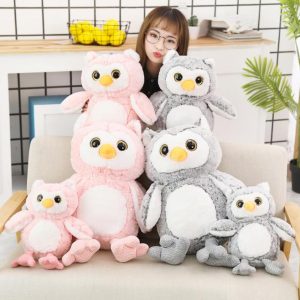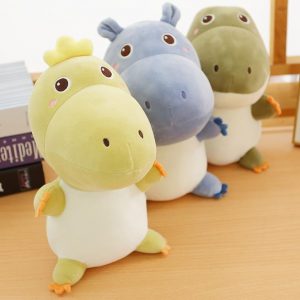Stuffed animals are widely recognized as therapeutic tools and have been used in various therapeutic settings to provide comfort, support, and aid in emotional and psychological healing. Here are some ways in which stuffed animals can be used in therapy:
- Comfort and Emotional Support: Stuffed animals offer a sense of comfort and emotional support, especially for children, during counseling sessions or in stressful situations.
- Play Therapy: In play therapy, stuffed animals can become a means of communication for children who may have difficulty expressing their feelings verbally. They can use the toys to act out scenarios or express emotions, helping therapists understand and address underlying issues.
- Coping Mechanism: Stuffed animals can serve as coping mechanisms, especially in situations of trauma or loss. They offer a tangible source of security and stability during difficult times.
- Anxiety Reduction: Holding or hugging a stuffed animal can help reduce anxiety and stress in both children and adults. The physical act of cuddling the plush toy triggers the release of oxytocin, a hormone that promotes relaxation and a sense of calm.
- Distraction Technique: Stuffed animals can be used as a distraction tool in medical settings or during medical procedures to help alleviate fear and anxiety.
- Transitional Object: For children going through challenging life transitions, such as hospitalization or starting school, a stuffed animal can act as a transitional object that provides familiarity and comfort.
- Sensory Integration: In sensory integration therapy, stuffed animals can be used to help children with sensory processing difficulties to regulate their sensory responses.
- Comfort during Grief and Loss: Stuffed animals can be used to support individuals, especially children, who are grieving the loss of a loved one. The plush toys offer comfort and a tangible representation of the deceased person.
- Symbolic Representation: Stuffed animals can represent emotions, relationships, or specific people in therapeutic activities, providing a safe and non-threatening way to explore complex feelings.
- Social Skill Development: In group therapy settings, stuffed animals can encourage interaction and cooperation among children, helping them develop social skills and empathy.
- Positive Reinforcement: Therapists may use stuffed animals as a form of positive reinforcement or rewards for achieving specific therapeutic goals or behaviors.
It’s important to note that while stuffed animals can be valuable therapeutic tools, they should be used appropriately and in conjunction with evidence-based therapeutic approaches. Different therapists may use these toys in various ways based on their specific therapeutic goals and the needs of their clients. Stuffed animals should never replace professional therapy but can complement therapeutic interventions to enhance the therapeutic process.








